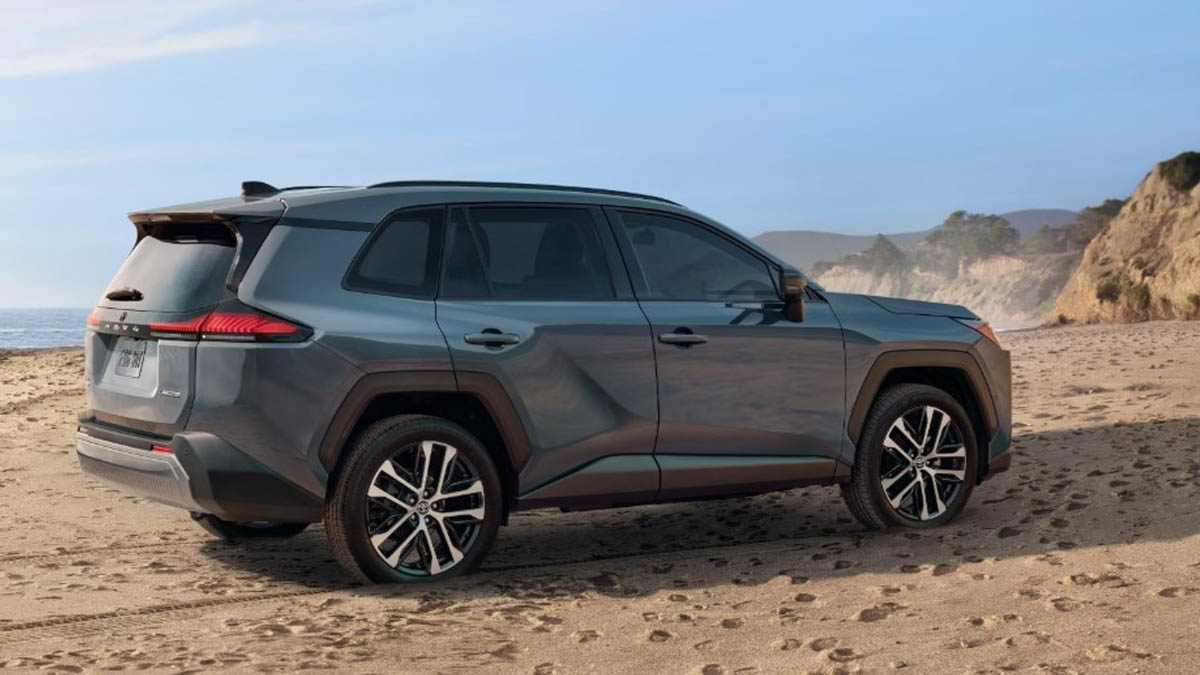
When it comes to compact SUVs, the Toyota Rav4 has established itself as a stalwart, ranking as the best-selling Compact SUV in Nigeria for decades now. To continue making Nigerian Rav4 lovers happy, Toyota comprehensively redesigned the 2026 model year, which now offers it only with hybrid and plug-in hybrid powertrains.
It’s a total game-changer. This redesigned, now packed with plenty of tech, and built to tackle Nigeria’s roads while saving you money at the pump. At carlots.ng, we’re pumped to give you the first look at this beast. Let’s dive into its specs, estimated prices in Nigeria, why it’s a must-have, and how to keep it running like a dream in 2026.
The RAV4 has been a Nigerian staple for years, loved for its toughness, decent fuel economy, and affordability. While people regard the older model as a "ladies car", the newer model proves them wrong in having almost the same look as the Highlander. A 2024 model costs ₦95M to ₦155M, depending on exchange rates and clearing fees. But the 2026 RAV4 steps it up with a hybrid-only lineup, a bold new look, and tech that makes it feel like you’re driving the future. With fuel prices in Nigeria hitting ₦1,000+ per litre after the 2023 subsidy removal, and inflation at 34.8% in 2025, this SUV’s fuel efficiency is a lifesaver. Whether you’re a family hauling kids to school or a business owner hitting the road, the 2026 RAV4 is built for Naija life.
The 2026 Toyota RAV4 is built on Toyota’s New Global Architecture (TNGA-K) platform, giving it a smoother ride and better handling on Nigeria’s pothole-filled roads. Here’s the lowdown on what makes it shine:
Powertrains:
Hybrid Electric Vehicle (HEV): A 2.5L 4-cylinder engine paired with electric motors, producing 226 horsepower (front-wheel drive) or 236 horsepower (all-wheel drive). It delivers 37-41 mpg combined, based on the 2025 model’s numbers.
Plug-in Hybrid Electric Vehicle (PHEV): Same 2.5L engine with two electric motors and a bigger battery, cranking out 320 horsepower (AWD only) with up to 50 miles of electric-only range. DC fast-charging hits 80% in about 30 minutes.
Trims: Three styles—Core (LE, XLE, Limited), Rugged (Woodland), and Sport (SE, XSE, GR Sport). The Woodland rocks all-terrain tires and higher ground clearance for off-road vibes, while the GR Sport (PHEV-only) has sporty 20-inch wheels and red-stitched seats.
Interior: Seats five comfortably with cloth or faux-leather seats (faux-suede with red stitching on XSE/GR Sport). You get a 10.5-inch touchscreen (upgradable to 12.9-inch) with wireless Apple CarPlay/Android Auto, plus a 12.3-inch digital gauge cluster. Perfect for streaming tunes or navigating Lagos traffic.
Safety: Toyota Safety Sense 4.0 includes automatic emergency braking, lane-keeping assist, and adaptive cruise control—ideal for dodging okadas and danfos.
Cargo Space: Around 69.8 cubic feet with seats folded, great for family trips or business hauls.
Why Nigerians Will Love It: The hybrid’s 37-41 mpg and the PHEV’s 50-mile electric range cut fuel costs big time, especially with Nigeria’s crazy fuel prices. The rugged design handles bad roads, and the tech keeps you and your passengers happy.

Toyota hasn’t dropped official 2026 RAV4 prices yet, but we can ballpark it based on the 2025 model and Nigeria’s market trends:
Hybrid (LE, XLE, Limited): With clearing costs and 42.1% naira depreciation, we expect a brand-new to cost ₦100 million - ₦130 million.
PHEV (Woodland, SE, XSE, GR Sport): ₦160 million - ₦180 million, due to premium tech and import duties.
Prices depend on exchange rates and customs fees, which can be a headache. Head to carlots.ng for the latest deals and help with clearing your RAV4 smoothly.
Keeping your 2026 RAV4 in top shape is crucial, especially with Nigeria’s rough roads and high maintenance costs (up 200% in 2025). Here’s how to keep it running like new:
Hybrid Battery Care: Check the battery cooling system every 10,000 km. Clean vents to avoid overheating and maintain efficiency.
Oil Changes: Use 0W-20 synthetic oil every 7,000-10,000 km for the 2.5L engine to keep fuel economy high.
Tire Maintenance: Rotate tires every 10,000 km and check pressure monthly (32-35 psi) to save fuel and handle potholes.
Brake Checks: Inspect brake pads every 15,000 km—Lagos traffic is brutal on brakes.
Coolant Flush: Refresh the coolant system every 40,000 km to prevent engine issues in Nigeria’s heat.
PHEV Charging: For PHEV models, charge nightly at home to maximise the 50-mile electric range. Limit DC fast charger use to extend battery life.
Interior Upkeep: Vacuum and wipe down seats weekly to keep the cabin fresh, especially for family or business use.
Pro Tip: Budget ₦30,000-₦40,000 weekly for fuel (less with the PHEV) and ₦15,000-₦25,000 monthly for maintenance. Stick with mechanics who know Toyota hybrids to avoid costly mistakes.
The 2026 RAV4 is built for Nigeria’s vibe, whether you’re a parent shuttling kids to school, a business owner making cross-city runs, or just someone who loves a stylish, reliable ride. Its hybrid powertrains save you cash on fuel, which is huge with prices at ₦1,000+ per litre. The Woodland trim is great for weekend getaways, while the GR Sport’s sporty look is. Plus, Toyota’s reputation for reliability means you won’t be stuck hunting for parts in the Ladipo market. The only catch? Limited charging infrastructure in Nigeria might make the PHEV trickier unless you’ve got a home charging setup.
The 2026 Toyota RAV4 is set to take Nigeria by storm with its fuel-efficient hybrid and PHEV options, rugged design, and tech-loaded interior. It’s the perfect SUV for tackling Nigeria’s roads while keeping your wallet happy. With the RAV4 Hybrid powered by a 2.5-litre four-cylinder engine and two electric motors that combine for 226 horsepower, front-wheel drive is standard. If you opt for all-wheel drive, a third electric motor is added to drive the rear axle, and horsepower climbs to 236 ponies. So, whether you’re eyeing the affordable LE or the flashy GR Sport, this 2026 RAV4 is built to impress.


Comments